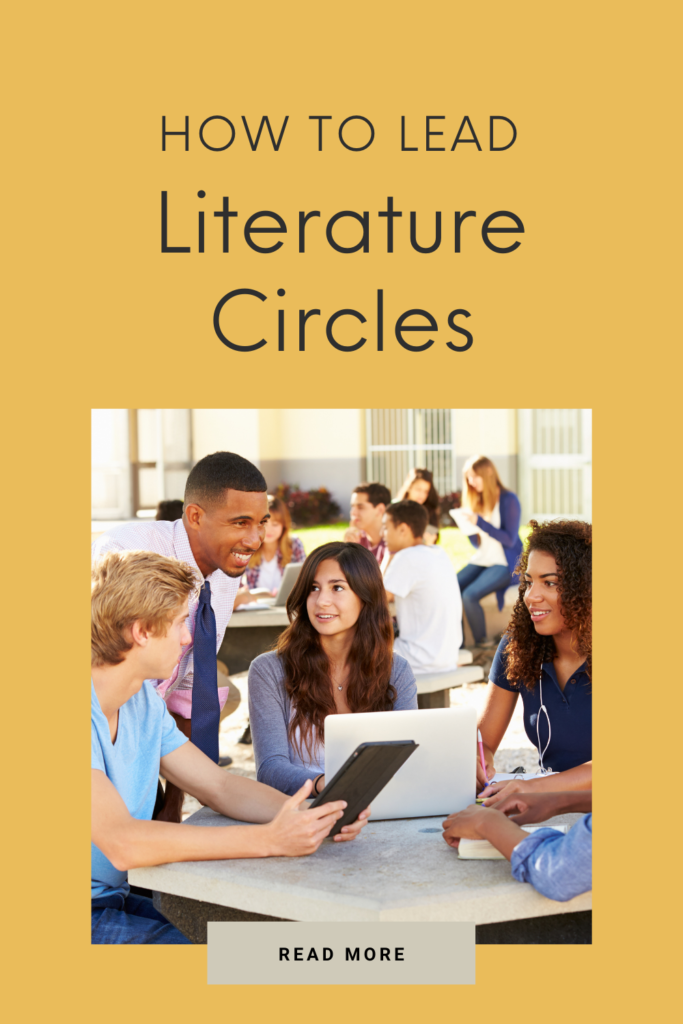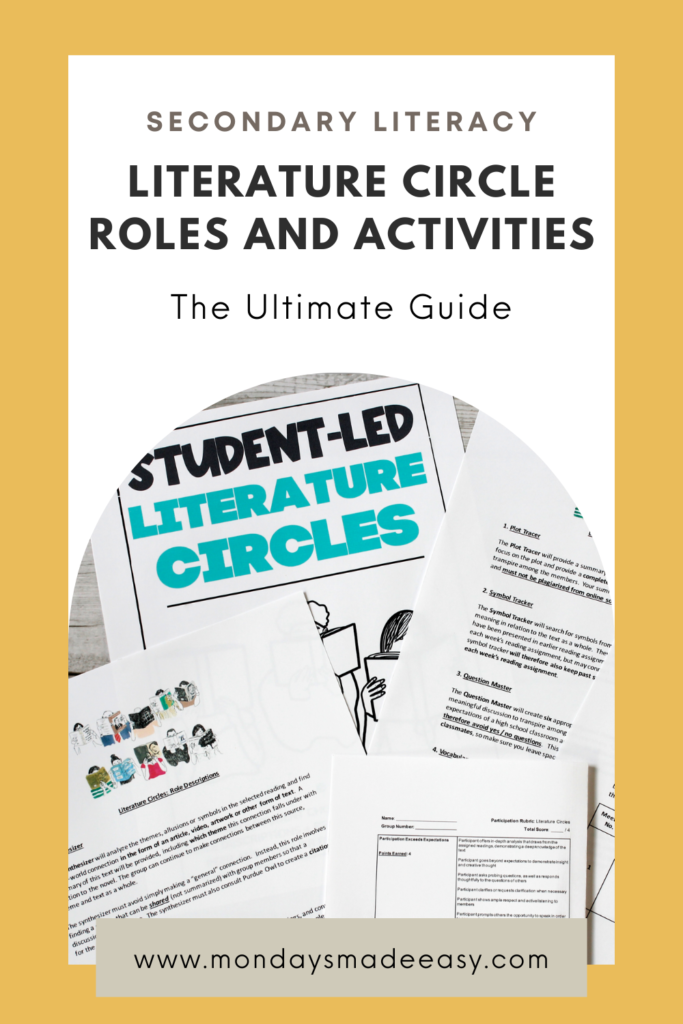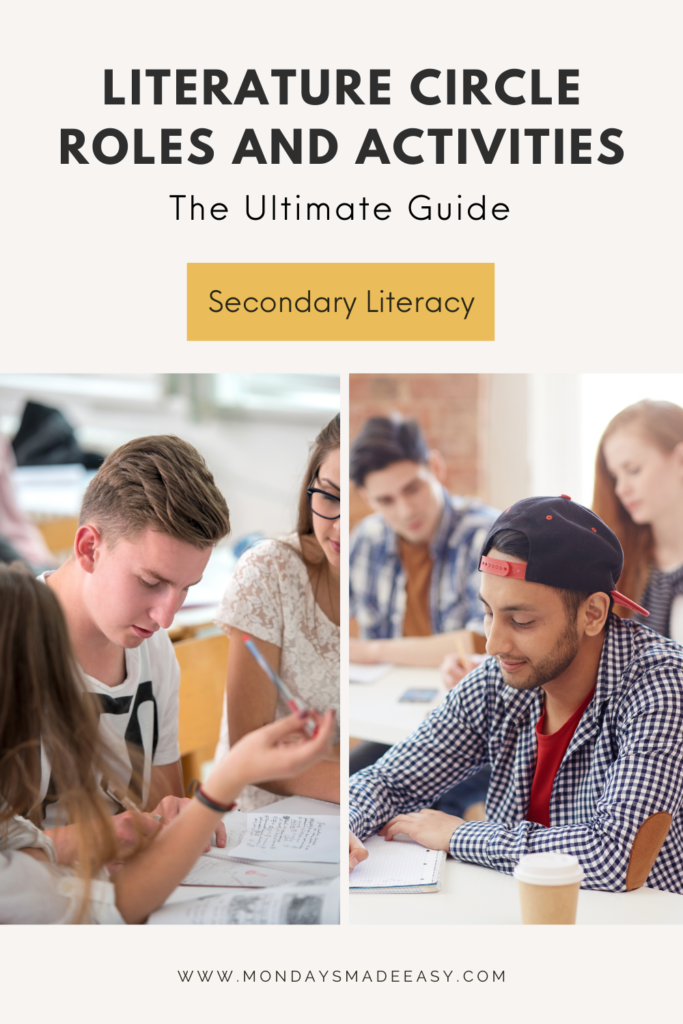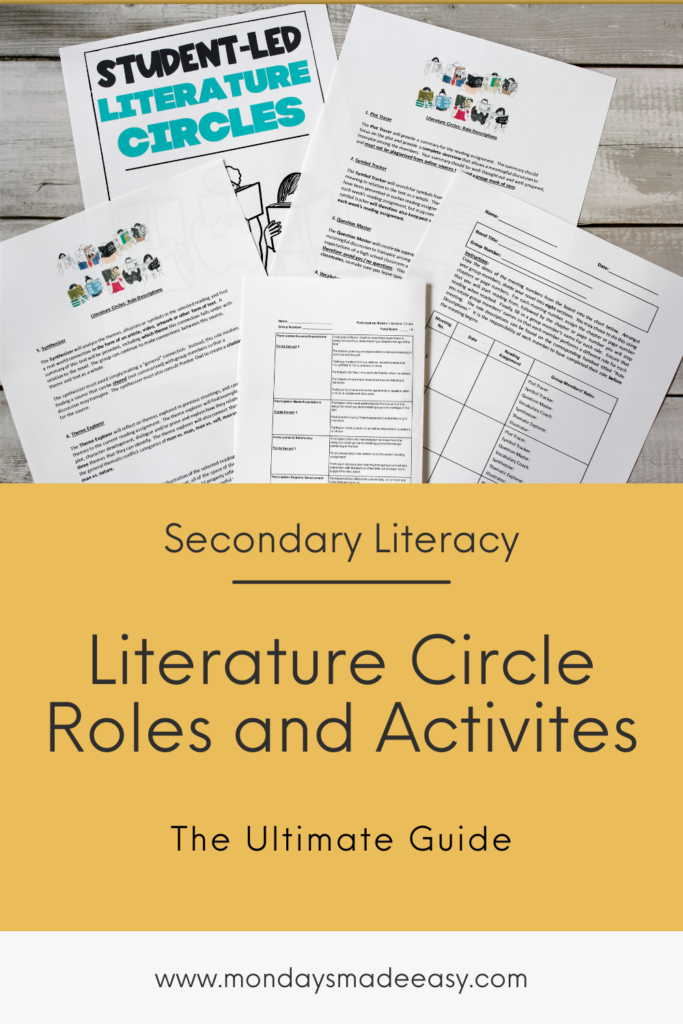In my first few years of teaching, I was constantly looking for ways to improve literature circles. I wanted literature circle roles that were differentiated, but also engaging for my students. I wanted to instill responsibilities that would mirror the reading strategies we were developing in our reading curriculum. Last but not least, I wanted my students to take initiative and hold each other accountable. So I did my research, and I wound up with this guide to literature circles.
This blog post explores some frequently asked questions about literature circles. It also shares activities and strategies for leading literature circles with older students, including engaging roles for literature circles.
Leading Literature Circles: Frequently Asked Questions
Do I need to pick books that I’ve read?
In order to assess students, it might seem like you’re responsible to read the book first. Thankfully, the answer is no – you do not need to pick books for literature circles that you’ve read! This is because the goal of literature circles is to facilitate peer-based learning. Since students will be learning from one another, it will not be your responsibility to guide them through the literary analysis.
How will I assess literature circles if I haven’t read the books?
The goal of peer-based learning is to have students build a shared understanding of the text. When assessing literature circles, determine what you think is important to evaluate. For example, if your curriculum is promoting higher-level thinking, then the goal is not for students to simply retell the story. This means you will not need to be able to re-tell it, either!
You can assess literature circles with one-pagers, overarching discussion questions, and final projects that require a strong understanding of the text. These assessments can focus on students’ critical thinking and text connections.
Here are some great resources for assessing literature circles:
- Elementary school (grades 4-6): Draw from a number of student reflection and assessment one-pagers in this elementary school literature circles unit.
- Middle school (grades 6-8): Prompt students to write a paragraph in which they reflect on their reading by writing a “Retell, Relate, Reflect, Review” book report.
- High school (grades 9-12): Have students focus on the theme and characterization within the novel by creating a movie trailer. Students can also explore different inquiry-based literature circle roles using this high school literature circles unit.
Do students need literature circle roles?
There is truly no right answer to this question. The benefits of liteature circle roles are that they offer structure, promote responsibility (which may improve attendance), and practice different reading strategies.
The disadvantage to literature circle roles is that they may stifle conversation and creativity; a study from the Journal of Adolescent and Adult Literacy reported that students would read responses from their role sheets and “[did] not react to each other or question each other; instead, they simply [gave] each other their answers.”
If you are finding that your students are stifled by roles, the alternative would be to teach them how to lead their own group discussions. To do so, you can use a group discussion outline with stentence stems and self-assessment tools. Students can rotate through the role of notating the discussion with their peers. Through modelling this process, students can sucessfully take on the resposibility of leading and documenting their discussions.
My students are all at different reading levels. Should I still use literature circles?
Yes! Research from the International Reading Association concluded that literature circles are a great strategy for neurodivergent students, struggling readers, and accelerated learners alike.
How do you organize literature circle meetings?
You can use a graphic organizer to schedule literature circle meetings; this graphic organizer can also indicate which reading assignments need to be completed for which meeting. I instruct students to divide the page number of their novel by the number of meetings within the graphic organizer. Students can use that as a guideline to establish how many chapters will be covered in each reading assignment.
Students can then note the literature circle roles for each week in the graphic organizer. I have every student fill out the graphic organizer so that they all know their role for each meeting.
Can students complete the same literature circle roles every week?
This depends on your students and the roles they wish to continually assume. Some roles, like the illustrator, are especially suitable for particular students. It may be a good opportunity for them to utilize their strengths. This is especially true if you are creating groups of students with diverse learning profiles.
In my classroom, I make them switch their roles each week. Even though they might not particularly love a role, it is beneficial for them to step outside of their comfort zone. It also avoids the predictability of completing the same tasks for each reading assignment.
How do teachers assign grades for literature circles?
You can assign both a group grade and an individual grade for literature circles. The group grade can be based on group assignments and activities from literature circle meetings. You can use the group grade as the basis for adjusting individual grades for each student. These adjustments can be based on their performance during their literature circle roles. It can also include peer feedback from peer evaluation forms.
Wrapping up with Literature Circles
I like to finish my literature circle unit with a final project. An assignment that students really enjoy is creating movie trailers for their novels. This project is a great assessment because it prompts students to consider important elements of the novel, like characterization and theme. Since they don’t want to spoil the plot, it also encourages students to avoid simple summaries. As a bonus, showcasing these trailers also sparks extracurricular reading for students who are inspired by their classmates’ work.
If you’re just getting started with literature circles or are looking for more resources and activities to lead your unit, be sure to check out Mondays Made Easy’s Literature Circle Bundle. This bundle includes literature circle roles, rubrics, discussion activities, and the movie trailer project mentioned above.




[…] teaching literature circles or simply looking for a fresh approach, you may also be interested in The New Teacher’s Guide to Literature Circles on the Mondays Made Easy […]